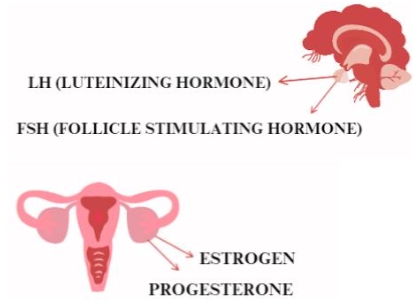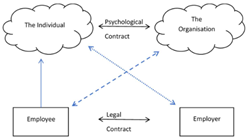Effects of home-based rope therapy on children with special educational needs
Abstract
Rope Therapy, a novel complementary therapy, combines professional rope techniques and professional comprehensive sensory integration training program, treatment, and training programs for people with special educational needs for the sake of enhancing their vestibular sense, proprioception, muscle tension, and whole body coordination ability by stimulating the brain nerves and secretion of neurotransmitters. Method: Rope therapy is conducted with the model “Home-based Rope Therapy Program” for 12 weeks. Parents who attended this program are required to accept training and assessment. To conduct the therapy independently, parents have to learn how to use the tools of this home-based rope therapy and interact with children during the training. In this study, children had intensive rope exercise training at home with positive feedback from parents within this period leading to higher emotional control and concentration level, more eye contact, and emotional and wording expression. The family would also receive feedback from the teachers, other professional trainers, and sports coaches related to the condition of the children. Result: A total of 69 families participated in the survey with children aged 4 to 26, including those who were diagnosed or had a suspicion of the autism spectrum, hyperactivity and inattention, dyslexia, and other special needs. After 12 weeks of home training, the result showed that the child’s concentration levels and control of negative emotions have been significantly improved. Meanwhile, it has been proven that the “Home-based Rope Therapy Program” is effective in bringing positive interactions and emotions to children and families. Conclusion: “Home-based Rope Therapy Program” provides children with intensive rope exercise training at home, satisfying children’s physical and sensory needs. Also, this program increases children’s exercise in muscle strength, balance, and coordination leading to higher concentration levels and high-quality parent-child time, thereby improving school children’s emotional control and concentration, and enhancing family harmony.
References
Banno, M., Harada, Y., Taniguchi, M., et al. (2018). Exercise can improve sleep quality: a systematic review and meta-analysis. PeerJ, 6, e5172. https://doi.org/10.7717/peerj.5172
Becker, S.P., & Gregory, A.M. (2020). Editorial Perspective: Perils and promise for child and adolescent sleep and associated psychopathology during the COVID-19 pandemic. The Journal of Child Psychology and Psychiatry, 61(7), 757-759.
Bremer, E., Crozier, M., & Lloyd, M. (2016). A systematic review of the behavioural outcomes following exercise interventions for children and youth with autism spectrum disorder. Autism, 20(8), 899–915. https://doi.org/10.1177/1362361315616002
Davoody, S., Goeschl, S., Dolatshahi, M., et al. (2021). Relation between ADHD and COVID-19: A Narrative Review to Guide Advancing Clinical Research and Therapy. Iranian Journal of Psychiatry. https://doi.org/10.18502/ijps.v17i1.8055
Hoza, B., Smith, A. L., Shoulberg, E. K., et al. (2014). A Randomized Trial Examining the Effects of Aerobic Physical Activity on Attention-Deficit/Hyperactivity Disorder Symptoms in Young Children. Journal of Abnormal Child Psychology, 43(4), 655–667. https://doi.org/10.1007/s10802-014-9929-y
Hupp, S. D. A., Reitman, D., Northup, J., et al. (2002). The Effects of Delayed Rewards, Tokens, and Stimulant Medication on Sportsmanlike Behavior with Adhd-Diagnosed Children. Behavior Modification, 26(2), 148–162. https://doi.org/10.1177/0145445502026002002
Liu, Q., Zhou, Y., Xie, X., et al. (2021). The prevalence of behavioral problems among school-aged children in home quarantine during the COVID-19 pandemic in china. Journal of Affective Disorders, 279, 412–416. https://doi.org/10.1016/j.jad.2020.10.008
Ludyga, S., Gerber, M., Mücke, M., et al. (2018). The Acute Effects of Aerobic Exercise on Cognitive Flexibility and Task-Related Heart Rate Variability in Children With ADHD and Healthy Controls. Journal of Attention Disorders, 24(5), 693–703. https://doi.org/10.1177/1087054718757647
Moriguchi, Y. (2014). The early development of executive function and its relation to social interaction: a brief review. Frontiers in Psychology, 5, 388.
Sciberras, E., Patel, P., Stokes, M. A., et al. (2020). Physical Health, Media Use, and Mental Health in Children and Adolescents With ADHD During the COVID-19 Pandemic in Australia. Journal of Attention Disorders, 26(4), 549–562. https://doi.org/10.1177/1087054720978549
Shields, G. S., Sazma, M. A., & Yonelinas, A. P. (2016). The effects of acute stress on core executive functions: A meta-analysis and comparison with cortisol. Neuroscience & Biobehavioral Reviews, 68, 651–668. https://doi.org/10.1016/j.neubiorev.2016.06.038
Tse, A. C. Y., Anderson, D. I., Liu, V. H. L., et al. (2021). Improving Executive Function of Children with Autism Spectrum Disorder through Cycling Skill Acquisition. Medicine & Science in Sports & Exercise, 53(7), 1417–1424. https://doi.org/10.1249/mss.0000000000002609
Tso, W. W. Y., Wong, R. S., Tung, K. T. S., et al. (2020). Vulnerability and resilience in children during the COVID-19 pandemic. European Child & Adolescent Psychiatry, 31(1), 161–176. https://doi.org/10.1007/s00787-020-01680-8
Copyright (c) 2024 Wai Lun Lam, Keng Tou Chau, Chun Cheong Wong, Adrian Low, Ming Hang Chan, Cheuk Chi Chung, Nga Yan Kwok, Lai Kiu Tsang

This work is licensed under a Creative Commons Attribution 4.0 International License.









